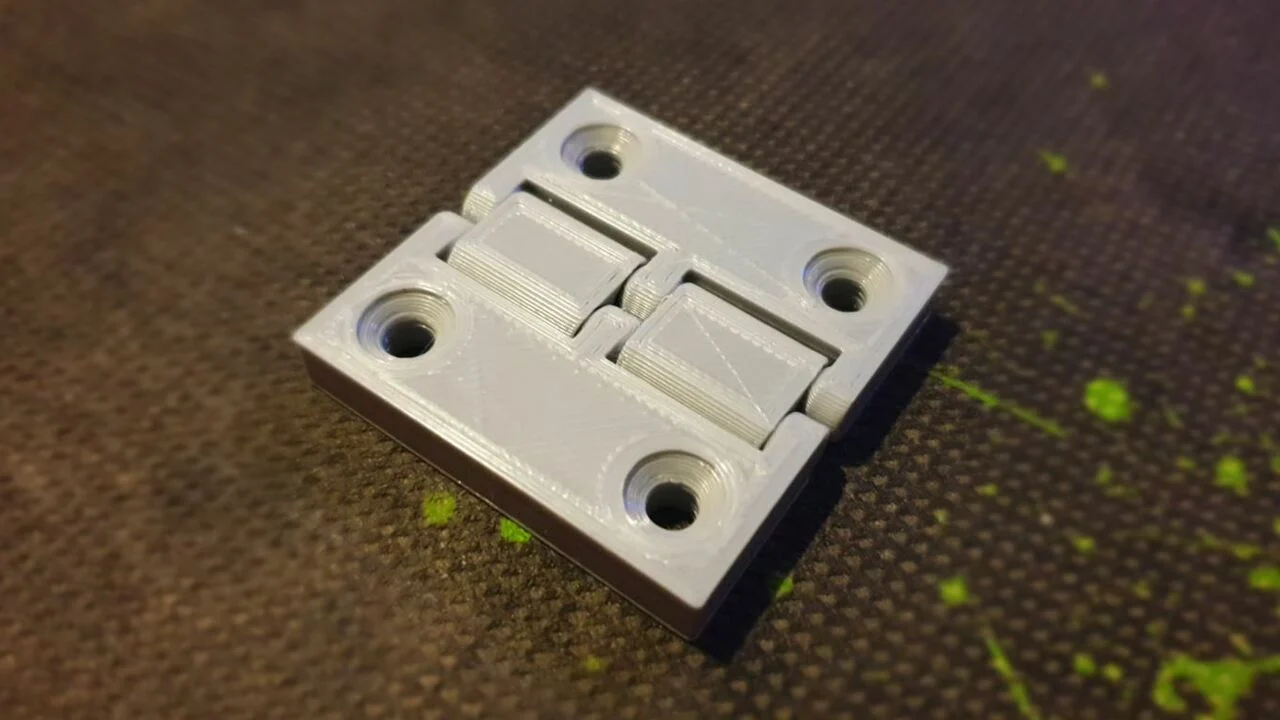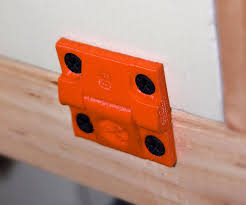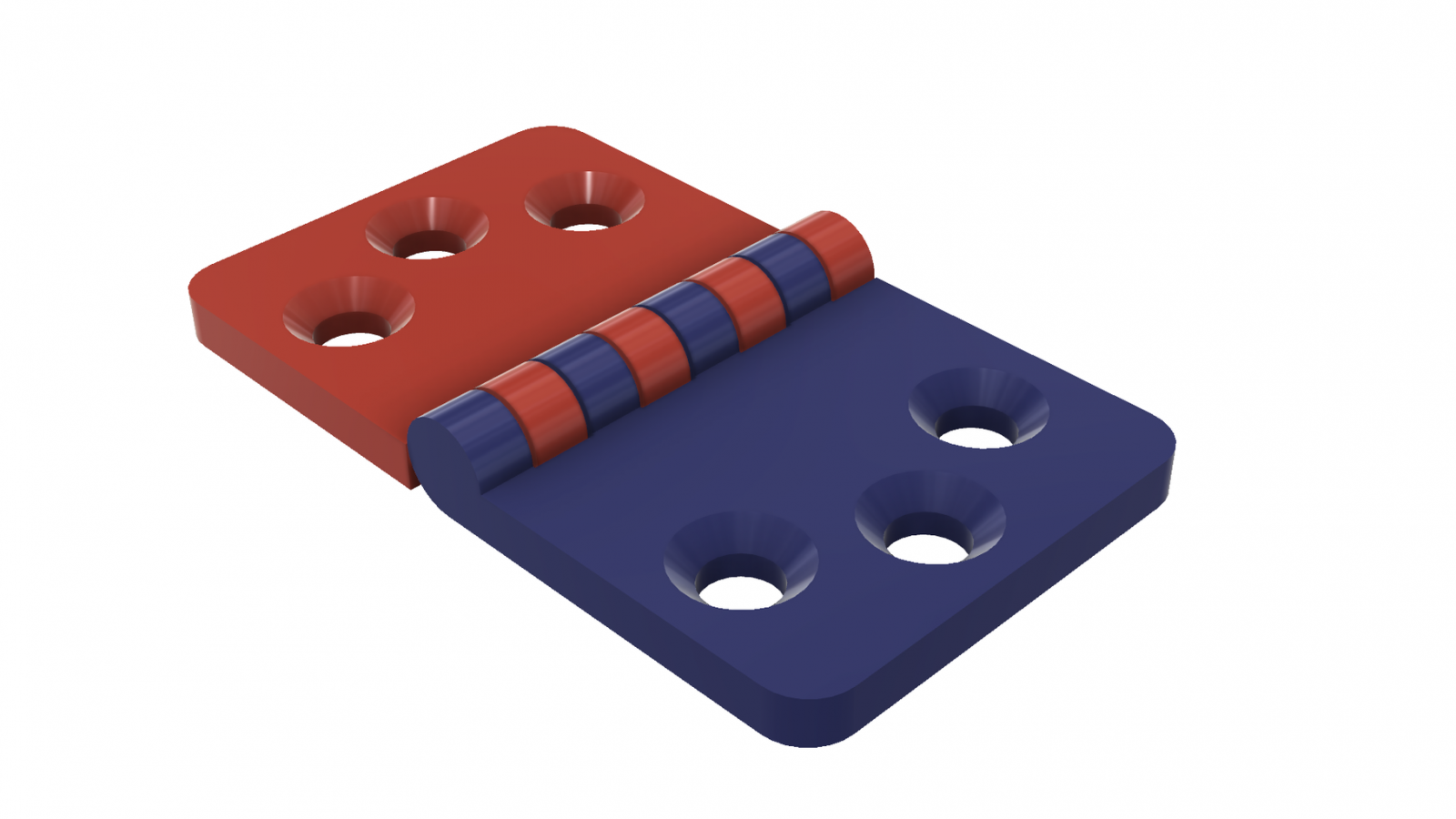OUTLINE:
5 Common Types of 3D Print Hinge
 87
873D printing hinges are a game-changer when it comes to making things that move. But how do you know which hinge is right for your project? And what are the go-to 3D print hinge types people use?

Image Source: AII3DP
Whether you’re working on a simple box, a fun gadget, or something more advanced, knowing your hinge options can make a huge difference. Let’s check out the five most common types and see what makes each one awesome!
What Is 3D Print Hinge[Preview]
A 3D print hinge is basically a joint that lets your 3D-printed parts move, like rotating or pivoting. You can print them as one piece or in separate parts that you assemble later. Whether it’s for a foldable box, a gadget, or a mechanical design, these hinges make your projects way more functional. They’re super handy, customizable, and perfect for DIYers and pros alike!
In other words, A 3D print hinge is a type of mechanical joint specifically designed to enable movement between two or more 3D-printed components. It functions by allowing rotation or pivoting around a central axis, similar to traditional metal or plastic hinges found in everyday objects like doors, storage containers, and mechanical assemblies. These hinges can be designed and manufactured through additive manufacturing techniques, meaning they are created layer by layer using a 3D printer.
What Is the Advantage of Using 3D printed Hinges

Image Source: Instructable
3D-printed hinges are a game-changer for anyone looking to add movement and functionality to their designs. One of their biggest advantages is customization—you can design them to perfectly fit your project’s specific needs, whether it’s a foldable box, a custom gadget, or a complex mechanical prototype. Unlike off-the-shelf hinges, 3D-printed ones allow for endless design possibilities.
Another great benefit is that they can often be printed as a single piece, meaning you don’t have to waste time on assembly or worry about losing small parts. This not only simplifies the process but also makes the hinges more durable, as there are no weak points from assembly. Even if you opt for a multi-part hinge, 3D printing gives you the precision needed to ensure the pieces fit perfectly together.
Cost-effectiveness is another key advantage. Traditional hinges, especially custom or unique designs, can be expensive and hard to source. With 3D printing, you only need a design file and materials, making it a much more affordable option—especially for prototyping or small-batch production.
Durability is also worth mentioning. Depending on the material you use—like PLA, ABS, or even more advanced filaments like nylon or PETG—you can create hinges that are sturdy enough to handle regular use. Plus, 3D printing opens the door to creative, one-of-a-kind designs that traditional manufacturing methods simply can’t achieve.
From small DIY projects to professional prototypes, 3D-printed hinges make it easy to bring your ideas to life. They combine creativity, efficiency, and functionality, giving you the tools to create moving parts without the limitations of traditional methods. It’s a smart, modern solution that’s as practical as it is innovative!
5 Common Types of 3D Print Hinge
When it comes to 3D print hinges, there’s a design for every need. Let’s break down five of the most common types and how they’re used:
1. Pin Hinge
This is one of the simplest and most widely used types. A pin hinge consists of two interlocking parts connected by a pin, allowing for smooth rotation. It’s great for applications that require durability and a full range of motion, like doors, lids, or even enclosures for electronic components. The pin can be printed separately and inserted later for better strength, or it can be integrated into the design for a fully 3D-printed solution. However, if printed as a single piece, clearance must be carefully adjusted to prevent fusing during printing. For heavy-duty applications, replacing the printed pin with a metal rod significantly improves wear resistance and longevity.
2. Living Hinge
A living hinge is printed as a single, flexible piece, typically using materials like TPU, polypropylene (if using SLS printing), or flexible PLA blends. It’s perfect for lightweight applications such as foldable boxes, wallets, or product packaging where frequent bending is required. Unlike mechanical hinges, living hinges don’t rely on pins or interlocking parts, which eliminates the need for assembly. They are incredibly durable when designed correctly, with a long lifespan due to their seamless construction. However, standard rigid materials like PLA or ABS will snap instead of flexing, so material choice is critical.
3. Knuckle Hinge
Knuckle hinges feature interlocking cylindrical segments (knuckles) that align to form a rotating joint, typically held together by a removable pin. This design is ideal for projects requiring a strong, reliable hinge with controlled motion, such as cabinet doors, tool enclosures, or mechanical linkages. Because of its segmented structure, it offers more stability and load-bearing capacity than a living hinge. High-precision 3D printing ensures a snug, functional fit between the knuckles, reducing wobble. For added durability, printing with materials like nylon or PETG and increasing wall thickness will enhance structural integrity.
4. Snap-Fit Hinge
Snap-fit hinges are designed for quick and tool-free assembly, using built-in flexible tabs or clips to hold the parts together. These are excellent for rapid prototypes, foldable devices, or enclosures where disassembly might be necessary for maintenance or adjustments. Unlike pin hinges, snap-fit hinges don’t require additional hardware, making them more cost-effective and user-friendly. However, they rely heavily on the right balance of flexibility and strength, meaning PETG, ABS, or tough PLA are preferred materials. Over time, excessive wear may cause the snapping mechanism to weaken, but reinforcing the clip areas with thicker sections can extend durability.
5. Barrel Hinge
Barrel hinges are compact and often used in applications requiring a hidden or low-profile hinge. Their small size makes them ideal for minimalist designs, such as jewelry boxes, compact electronic cases, or secret compartments. Unlike exposed hinges, barrel hinges sit within the structure of the object, offering a clean and professional appearance while maintaining full functionality. Proper tolerance calibration is crucial to ensure smooth movement without excessive friction or loose fitting. For added strength, printing with carbon fiber-reinforced filaments helps resist wear, especially in applications where repeated opening and closing occur.
What Type of Hinge Is Ideal for Creating Simple Door Mechanisms
A 3D print hinge is a super handy way to add movement to 3D-printed parts, and there are a few different types depending on what you need. If you're making a simple door mechanism, the best choice usually comes down to three main 3D print hinge types: barrel hinges, print-in-place hinges, and living hinges.
A barrel hinge is a great option if you want something sturdy and reliable. It works like a traditional hinge, with two interlocking pieces and a pin in the middle that lets the door swing open and closed. You can print the pin separately or use a small metal rod for extra strength. It’s perfect for cabinet doors, toolboxes, or anything that needs smooth movement and durability. Just make sure to leave a little clearance—around 0.3mm—so the hinge parts don’t fuse together while printing.
If you want something super easy to print and use right away, a print-in-place hinge is the way to go. This type of hinge is printed as one solid piece, with tiny gaps built into the design so it can move straight off the printer. No assembly required! It’s ideal for lightweight doors, small enclosures, or lids on storage boxes. The trick here is dialing in your print settings so the hinge doesn’t get stuck—keeping a 0.3–0.5mm gap between moving parts usually does the trick.
For thin, flexible doors or foldable designs, a living hinge is the best bet. Instead of rotating around a pin, it bends like a flexible strip. It works great for lightweight enclosure covers, packaging, or foldable storage boxes. But the material matters—a living hinge printed in PLA will probably snap pretty fast, while something like PETG, TPU, or nylon will last much longer. Keeping the hinge section thin, around 0.3–0.8mm, also helps it flex properly.
So, if you need a strong, classic hinge, go with a barrel hinge. If you want something easy with no assembly, a print-in-place hinge is perfect. And if you need a flexible hinge for thin, lightweight designs, a living hinge is the way to go. Each of these 3D print hinge types has its own strengths, so it all depends on what kind of door mechanism you’re building!
Can 3D-printed hinges be Used for Heavy-duty Applications

Image Source: Instructable
Yes, 3D-printed hinges can be used for heavy-duty applications, but it all comes down to how you design and print them. While they won’t completely replace metal hinges for extreme loads, a well-made 3D-printed hinge can handle a surprising amount of stress if done right.
The biggest factor is material choice. Nylon is the top pick because it’s tough, wear-resistant, and flexible enough to handle repeated movement without snapping. Polycarbonate is another solid option—it’s strong and impact-resistant but needs high print temps. PETG is a good middle ground, offering durability without being brittle. Carbon fiber-infused filaments are even better for extra strength. PLA? Not a chance. It’s too brittle and will break under pressure.
Design matters too. If you’re going for strength, a barrel hinge with a separate pin is the way to go, especially if you swap the printed pin for a metal rod or screw. Making the hinge thicker and using multiple pivot points also helps distribute weight better.
Print settings make a huge difference. Print the hinge vertically so the layer lines run perpendicular to the rotation—this prevents breakage. Crank up the infill to 50–100%, use at least 3–5 wall layers, and keep layer heights low for better adhesion.
For extra toughness, post-processing can help. Annealing makes materials like nylon and PETG even stronger, while acetone vapor smoothing fuses ABS layers together. Replacing the printed pin with a metal rod is an easy way to boost durability.
With the right setup, 3D-printed hinges can work great for toolboxes, industrial enclosures, heavy-duty furniture, automotive parts, and even robotics. They’re strong enough for serious use, but if you're dealing with extreme weight or constant stress, reinforcing them with metal parts is the best move.
Final Verdict
Understanding the five most common 3D print hinge types—pin, living, knuckle, snap-fit, and barrel hinges—can help you choose the best design for your project. Each hinge offers unique benefits, from flexibility and ease of assembly to strength and precision. With 3D printing, you have the freedom to customize hinges to perfectly fit your needs, making your designs more functional and innovative

Disclaimer: The views and opinions expressed by individual authors or forum participants on this website do not represent the views and opinions of Chipsmall, nor do they represent Chipsmall's official policy.

share this blog to:

